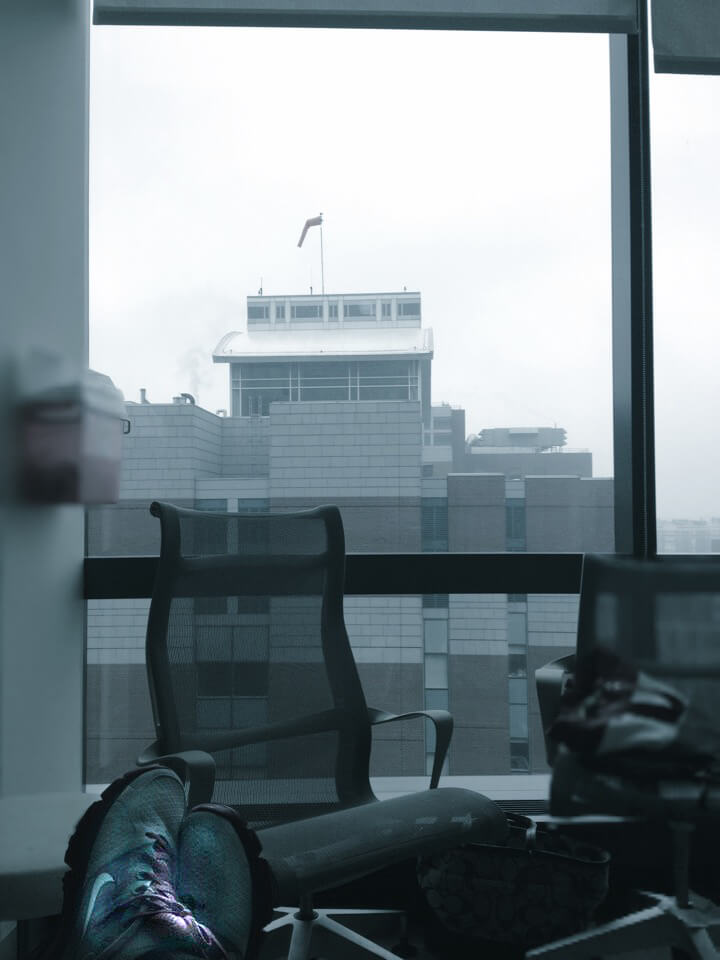
When I first began working on healthcare projects, I knew that I wanted to create environments that would benefit all users: staff, patients, and families. I didn’t realize that even the smallest design decision had a direct impact on patient’s state of mind and well being. I gained a firsthand perspective on how critical good design can be for the patient in 2012 when I was diagnosed with Stage Four Hodgkin’s Lymphoma. At the same time that I was designing an imaging suite for a client, I was suddenly playing the role of the patient, being poked, prodded, imaged and injected. From that moment on, the term “patient centered care” was real and I knew it would always be with me and my work.
I used my treatment time as an opportunity to learn and observe. I questioned the doctors and nurses about the spaces they worked in. I began to pay attention to how the environment made me feel as I was working to heal. While waiting in holding rooms prior to procedures, I noticed how disconcerting it could be to hear other procedures nearby: the sound of a cross-corridor door opening and closing in a busy hallway and the clicking of heels on a VCT floor. Could the holding room be on a quieter corridor? Could the flooring be a different material? Could the STC rating of the walls be improved upon? The answers to these questions was, ‘yes.’
I’m sharing my stories from the patient’s chair in hopes of opening the eyes of those who have not had the opportunity to see this perspective. As designers we need to consider the patient’s priorities as well as those of staff and administrators. After all, it is the patients who often choose where they will go for care. Do we really want to be responsible for their bad experience? How can we approach our work and make a positive impact on the patient? Put yourself in the patient’s shoes as you work through the design of healthcare environments.
Lesson #1: Determine the duration of a patient stay and consider what they might like that environment to be
Infusion is a very long process – my four to six hour infusion was short compared to some of my fellow patients. It can take most of a day. Flexibility of seating and privacy can make this experience more bearable. Movable chairs, tables and work surfaces, and room dividers with translucent panels that can be opened and closed can make this flexibility possible. Some patients like to be near others so they can talk, others like quiet, private spaces so they can rest. Think about the family and friends that might be there. Some patients have one companion; others have many. Make room for choice. When you are a cancer patient you have few choices; there are procedures and treatments that simply must be done. It is an incredible gift for a patient to be given the opportunity to make a decision about their treatment environment for the day.
Lesson #2: Consider the location of program. Make it easy to navigate and understand
Accessibility and location of program elements was important to me when I was in treatment. On my infusion days I would be tethered to an IV pole, receiving fluids and chemo throughout my stay. As a result, I would be up hourly, walking alone to the restroom. Chemotherapy can make a patient tired, weak and nauseous. To get up from a recliner keeping IV lines intact and walk is quite a feat. Location of the restroom, and the presence or absence of barriers along the way, is an essential part of making this trip. When available, I asked for an infusion bay near the restroom so I could see when it was free and not have to stand and wait in the hall if it was occupied. Another consideration is the door itself. It can be difficult for a weakened patient to open a heavy door. Closers can be adjusted to make this easier. Think about thresholds. Can patients get their wheeled IV pole over the threshold transition between flooring materials? How far down the hall is the restroom and is the pathway a pleasant experience with artwork, or does it pass by back-of-house areas? Is there an alcove with a bench for resting along the way? This should be a quick, precise path that is barrier free and visible in case the patient needs assistance. Clear sight lines from patient infusion bays and areas like the restroom, nurses, and nourishment areas allow a patient to easily spot what they might need and as an effect, feel better about their experience.
Lesson #3: Let there be light and let it be controlled by the patient
I learned that natural light had a calming effect on me, affirming the need for access to windows, light, and the outside world. I watched the street activity or embraced views of the sky. Treatment spaces should have the ability to allow or block daylight, allowing the patient to control that light, making the space work for their needs at the moment. When I was in center-core spaces without daylight, it was harder to not feel anxious and time passed more slowly. There were occasions when it felt like they stuck me in a former broom closet. “Who designed these spaces,” I wondered? Were they just after-thoughts? Seating choices, dimmable lighting, accessibility to family and friends, and art work on the walls or ceiling can help keep patients calm and more comfortable in daylight-less spaces.
These are a few of many lessons I learned. I’d encourage others to take a less hands-on approach than I did: shadow within the facility you are going to renovate, or for new construction, spend time in the existing facility. If the client has a patient and family advisory committee, incorporate it into the design process. Advisory groups offer a unique perspective as you work with your client and their staff to create an environment that takes all views into account.
Now that I am three years in remission, all this knowledge I have gained, positive and negative, has inspired and educated me on how the built environment can affect the healing process. I experienced both therapeutic and dismal spaces throughout my journey and it has changed my outlook and design process for the better.
Christine Rancourt, EDAC, LEED AP is an experienced architectural designer with a focus on Healthcare and Senior Living environments. She joined JSA in 2007.


